The .50-caliber legend was born when American General John J. “Black Jack” Pershing grew weary of having German observation balloons and airplanes wandering over his trench lines during World War I. The Krauts would run their hydrogen-filled balloons up on a long tether well out of range of rifle and machinegun fire.
Their early Junkers bombers were also seemingly immune to rifle rounds while at altitude. In fact, the Junkers J.I was the first all-metal aircraft to be mass produced. From their lofty vantage, the Germans would observe Allied troop movements, drop bombs, and adjust artillery fire. Black Jack was having none of that.
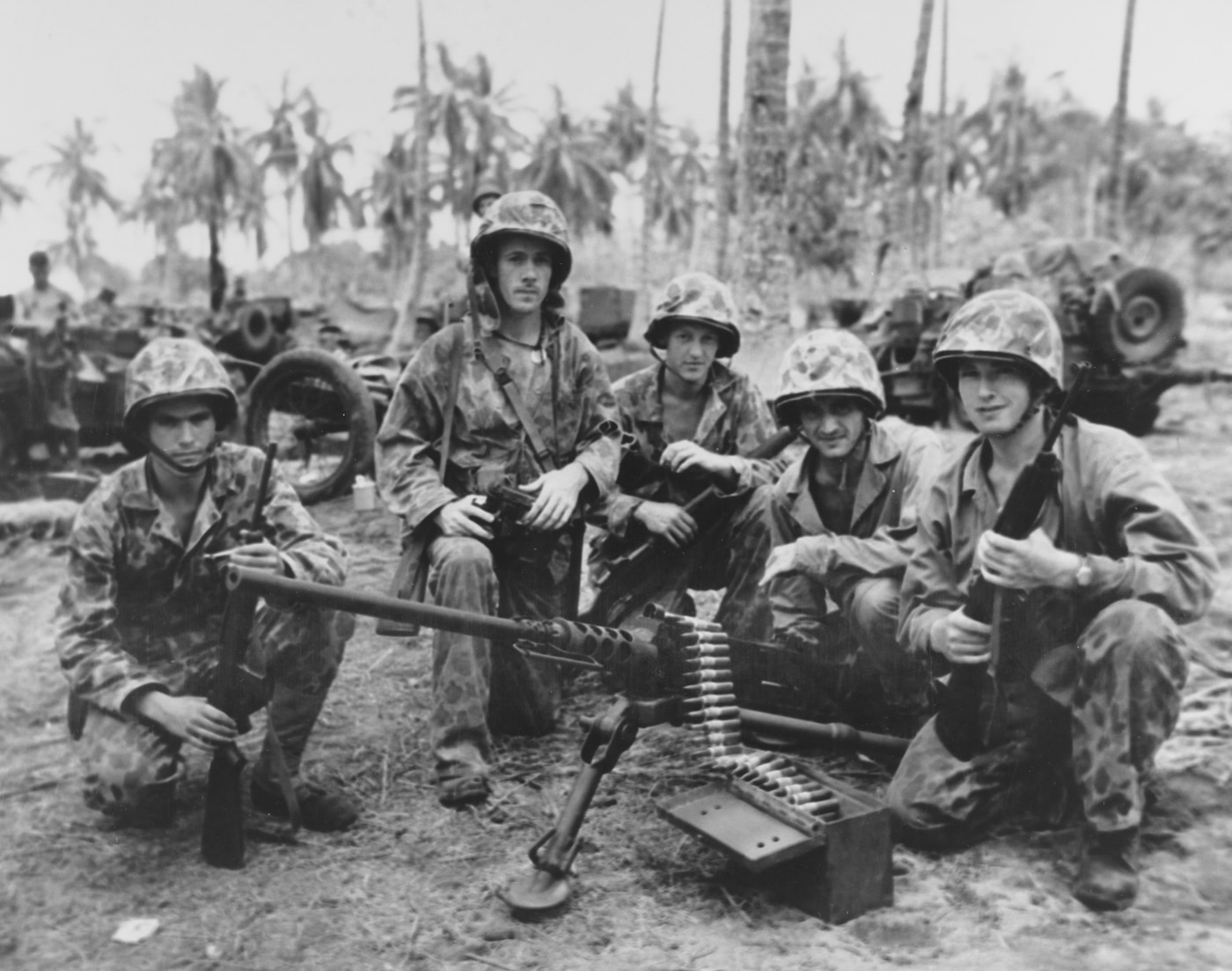
Pershing asked the Army Ordnance Department to bodge him up a machine gun with a half-inch bore that sported a muzzle velocity of at least 2,700 feet per second to deal with these distant threats. The Ordnance guys tapped John Moses Browning, the greatest firearm designer in human history. Just 15 months later, Browning was throwing big honking bullets downrange.
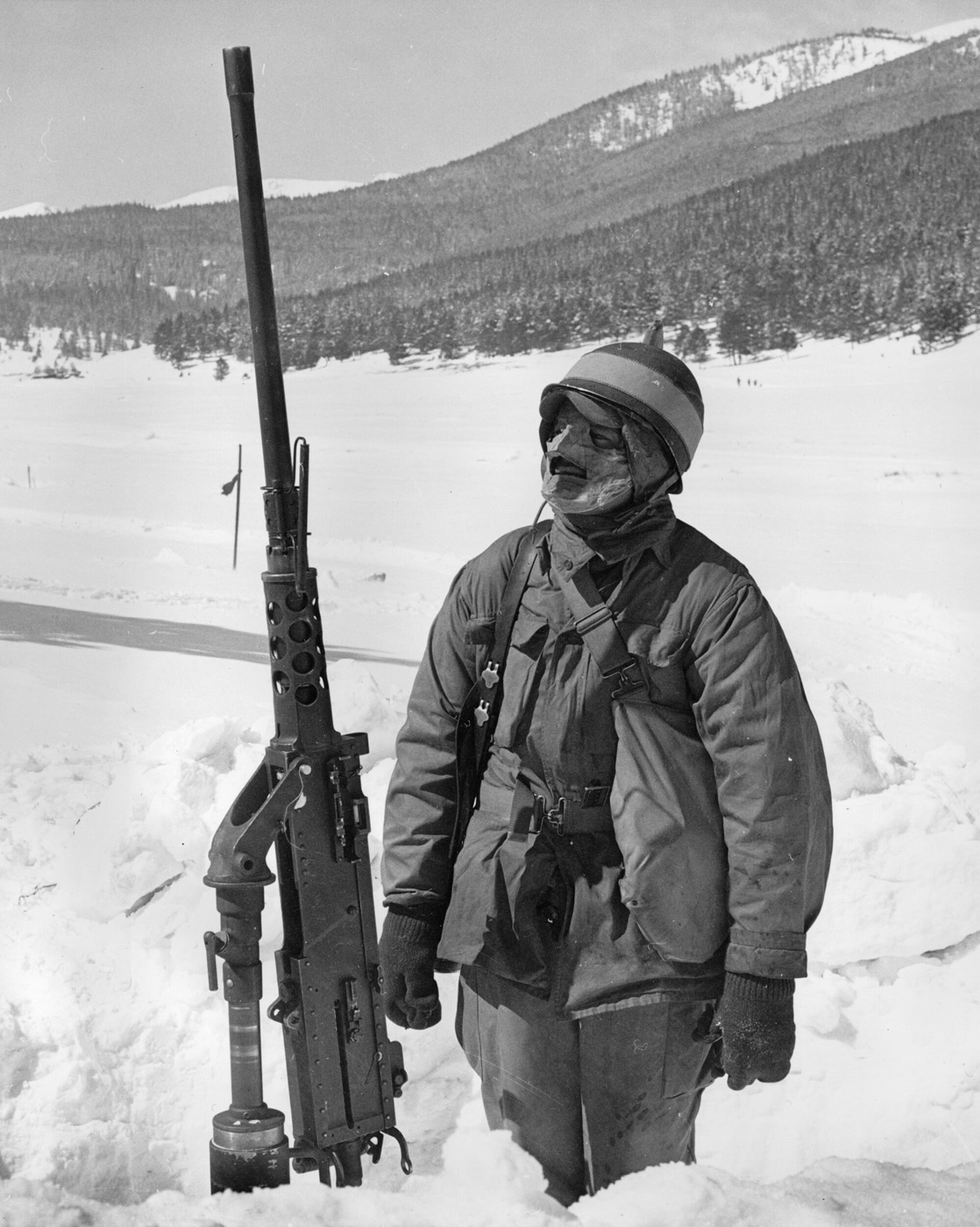
Winchester designed the ammo. The cartridge was simply a scaled-up version of the standard .30-06 Springfield service round. However, that first .50-caliber machine gun fell short of the original velocity requirement by some 400 fps.
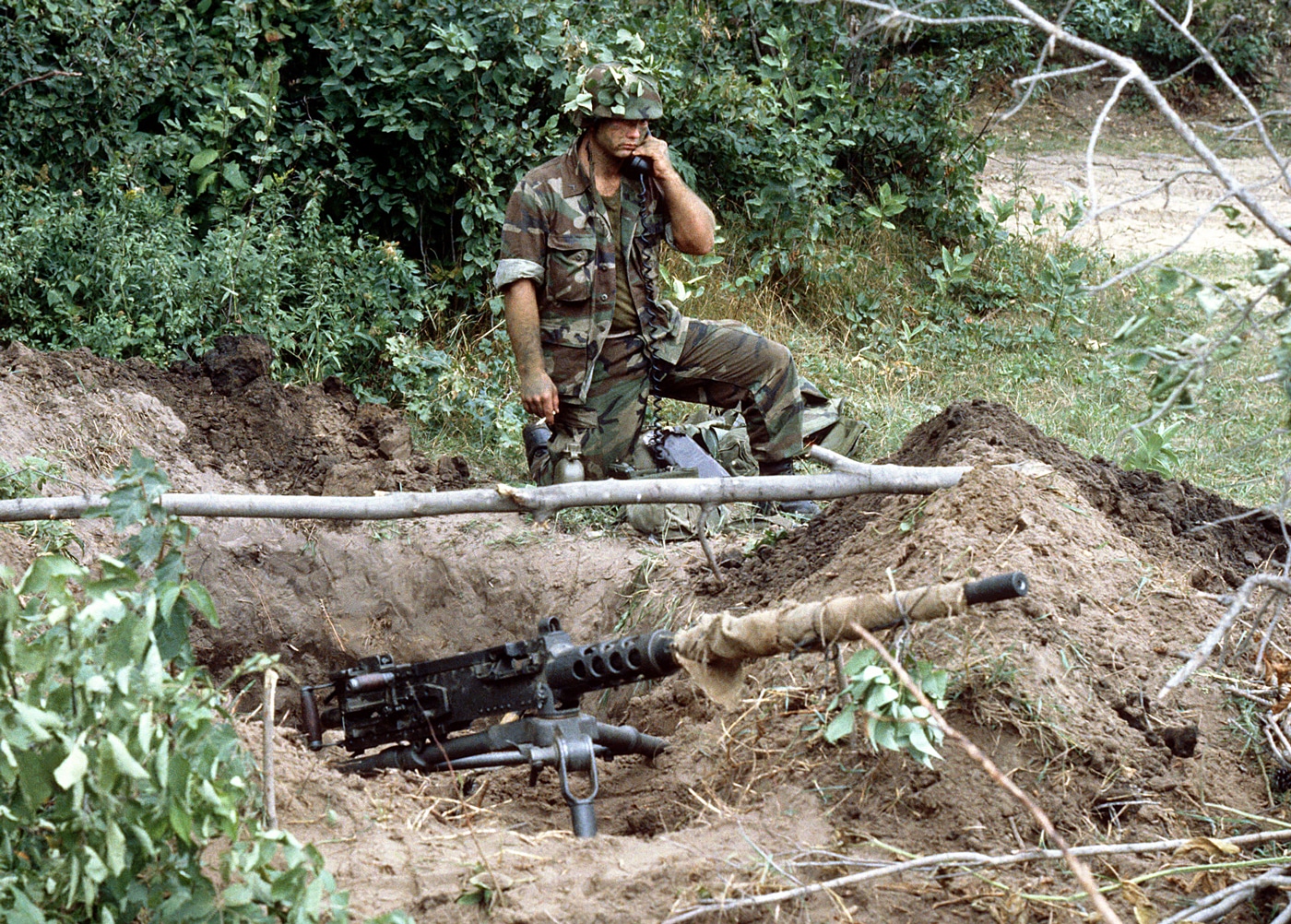
Influence of a German Anti-Tank Rifle
Then we got our mitts on captured examples of the German Mauser Tankgewehr M1918 (T-Gewehr). Chambered for the 13.2x92mmSR cartridge, the T-Gewehr was a bolt-action, anti-tank rifle. By incorporating the bullet geometry from the T-Gewehr into the .50-caliber round, the ammunition guys comfortably hit 2,750 fps. The new cartridge was the .50 BMG.
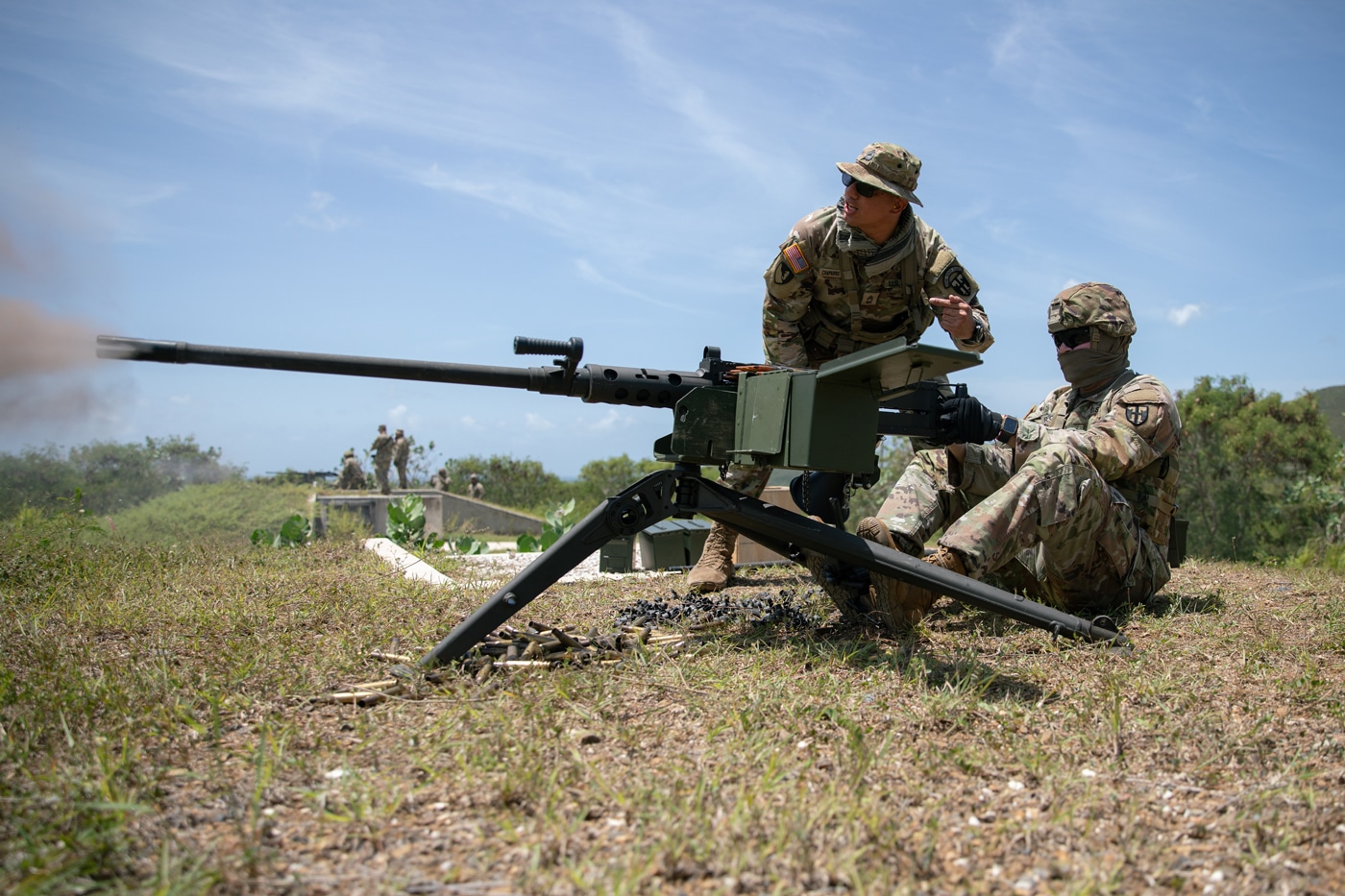
Those first .50 BMG chambered guns were the huge M1921 Browning machine guns — water-cooled and bulky. The subsequent air-cooled M2HB (M2 Heavy Barrel) was perfected after Browning’s death and went on to become the longest-serving firearm in US military history. U.S. troops christened the big gun the Ma Deuce.
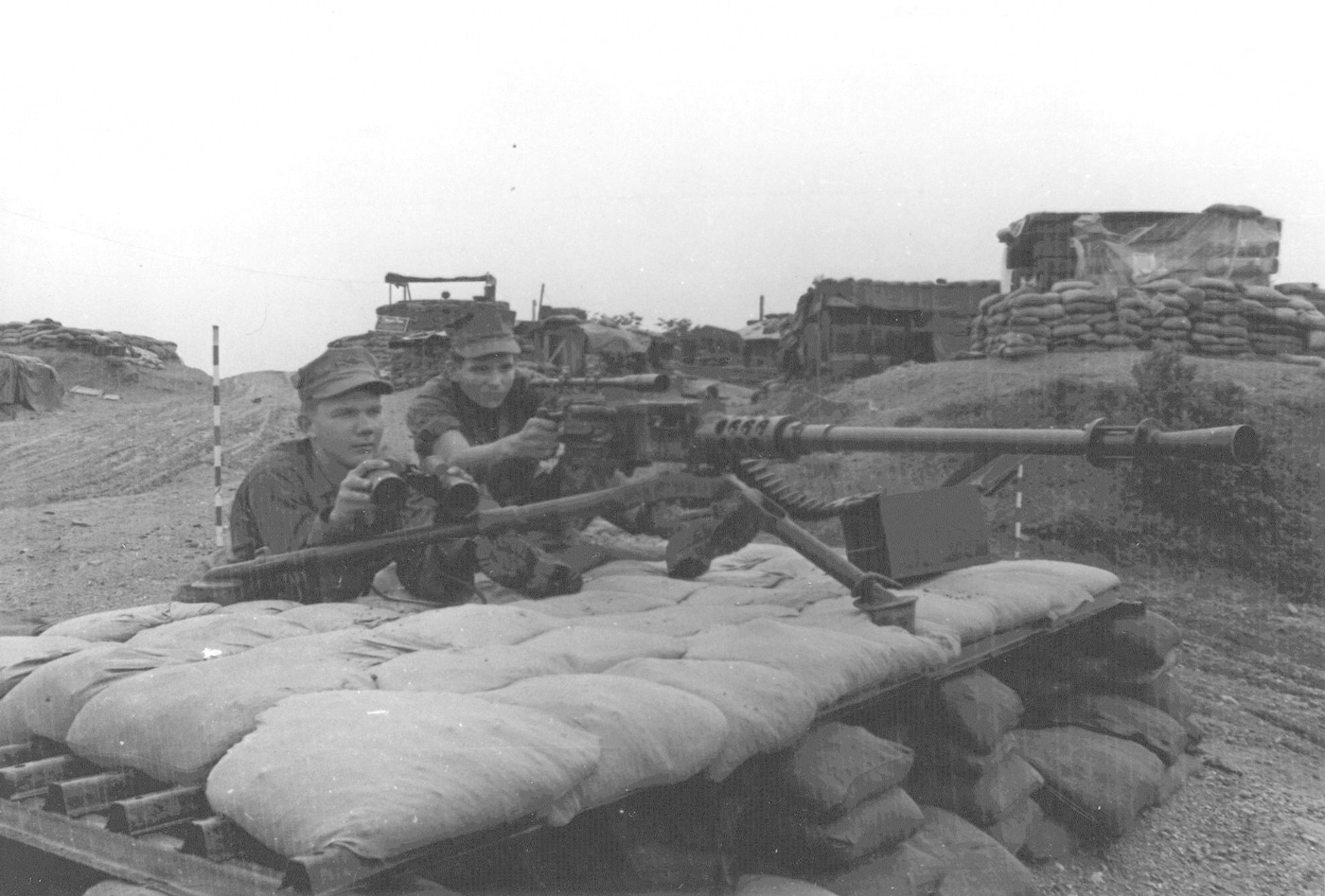
The Ma Deuce found its way onto tanks, the decks of ships, ground tripods and about a zillion combat aircraft. We have tried and failed for more than a century to find something better. Browning’s apparently perfect design seems poised to serve the United States and her allies for another 100 years or so at least.
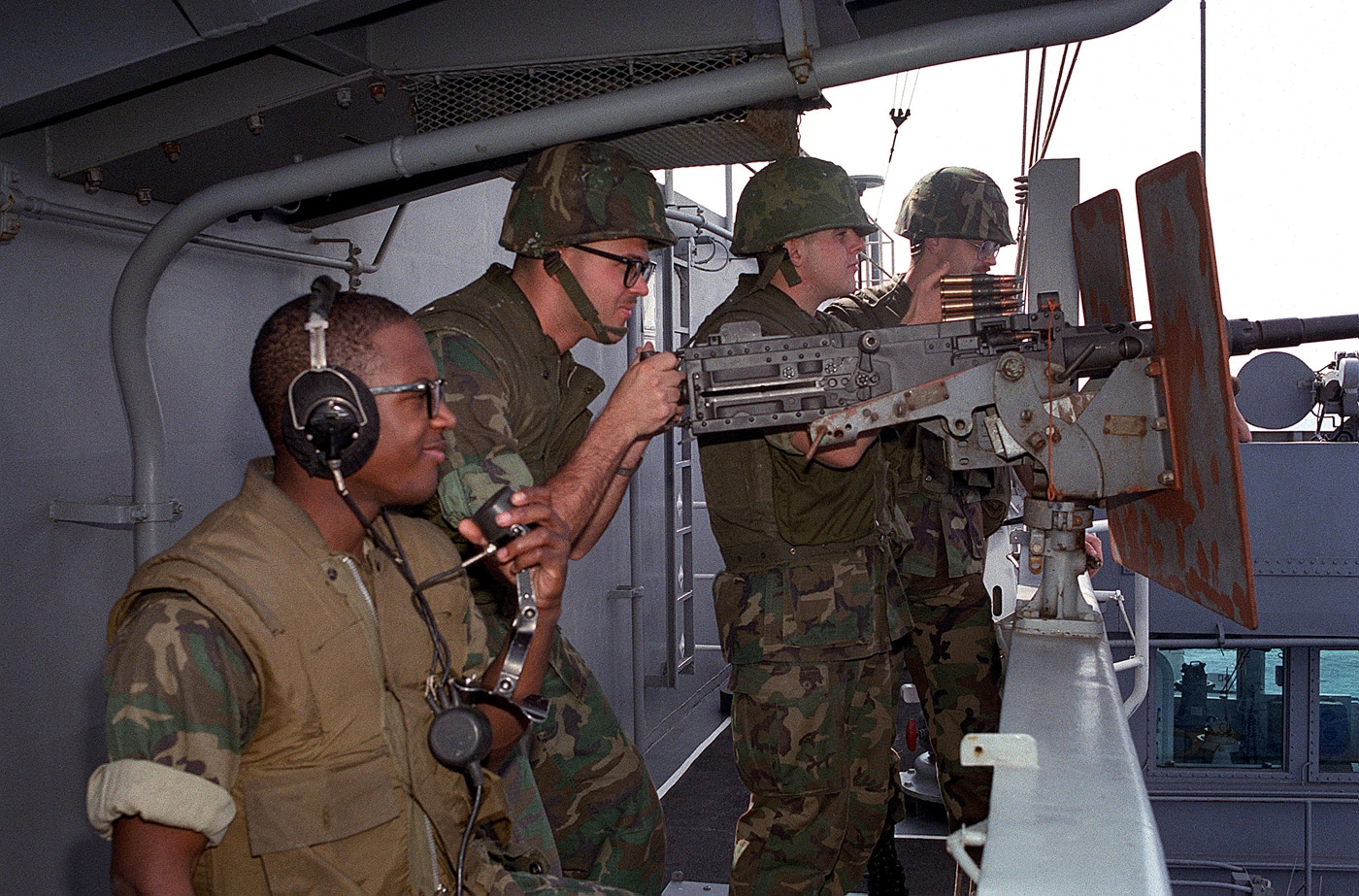
Wrong End of the Fifty
I have actually been shot at once by a guy behind a .50-caliber machine gun. It was an accident. I’ll keep the details to myself as I am not certain what the statute of limitations might be on stupidity of that magnitude. Suffice it to say, being on the receiving end of Mr. Browning’s massive machine gun was a uniformly life-altering experience. It makes me itch just a bit thinking about that even today.
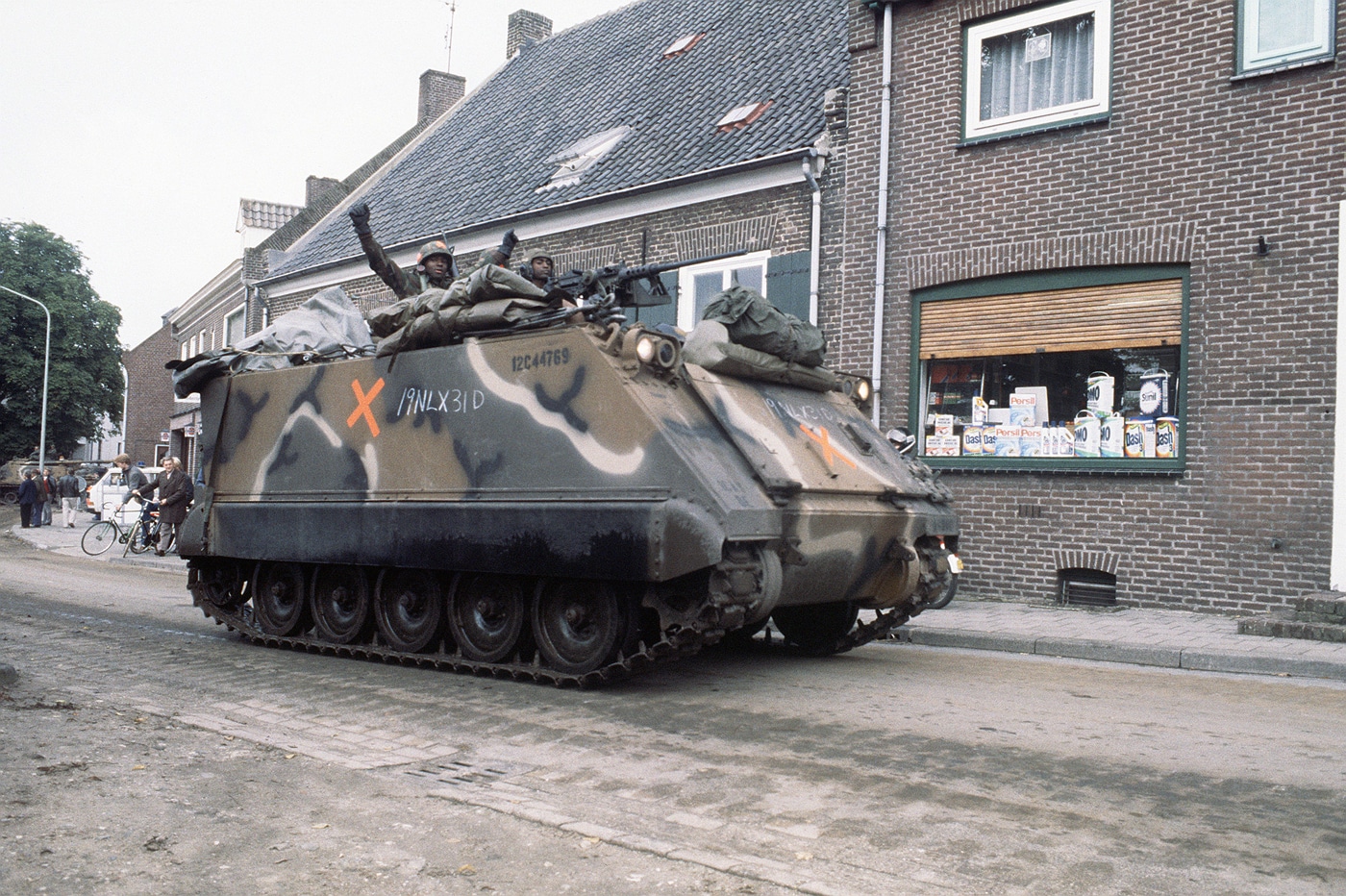
The problem is that it is really tough to hide from that thing. What might be solid cover against an M16 or AK-47 is not much of an impediment for the mighty Ma Deuce. The M2 will punch through trees, cars, walls, and body armor with ease. The gun’s range, reliability and penetration are what made the weapon so popular for so long.
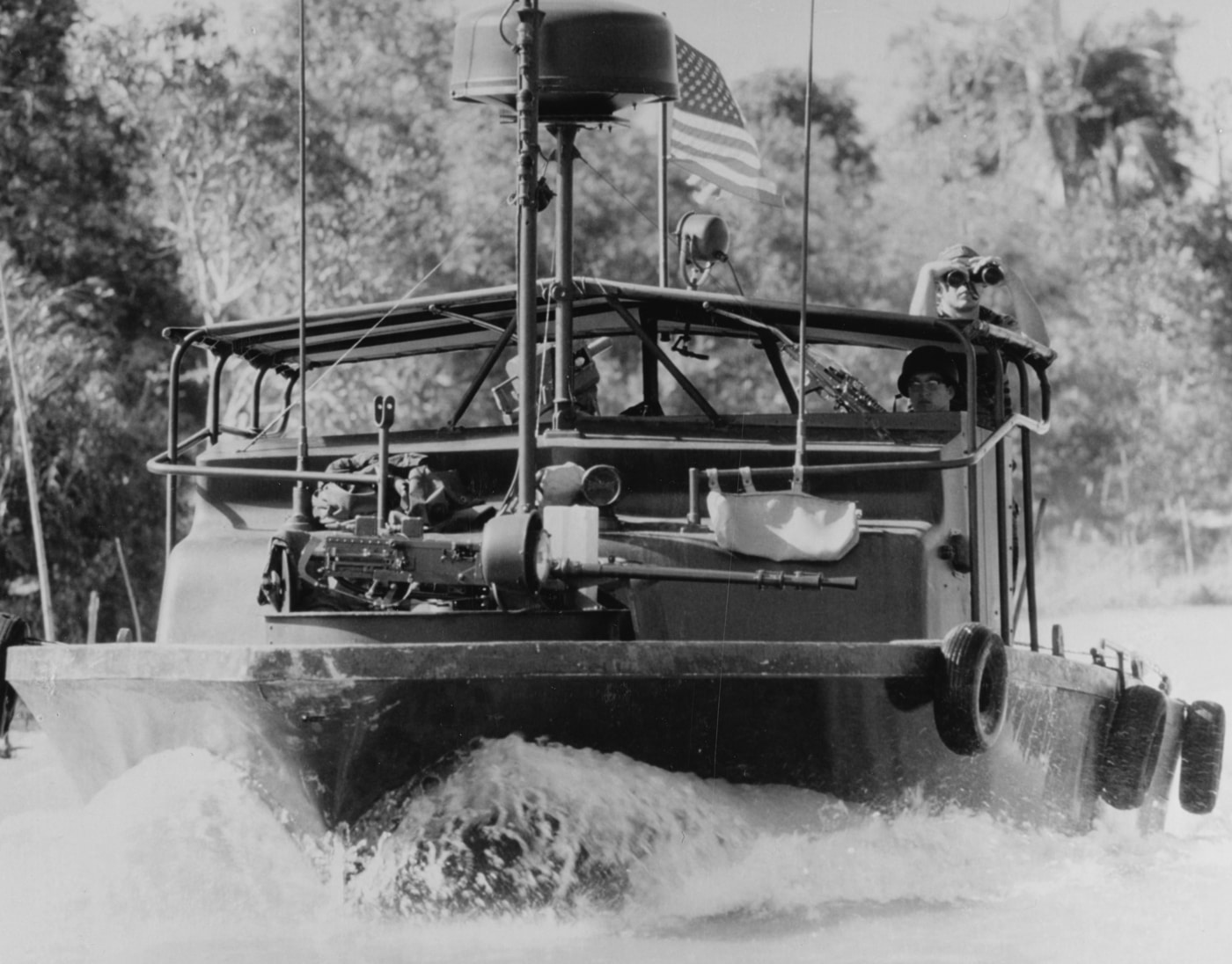
Details on the M2
The belt-fed M2 .50-caliber machine gun is a short-recoil design. That means the barrel and bolt remain locked together as a unit at the moment of firing. The barrel cycles back with the bolt for a short distance before they separate, to then effect extraction and ejection. The gun fires from the closed bolt and can be easily swapped between left and right feed. This feed conversion can be undertaken in minutes by a skilled operator.
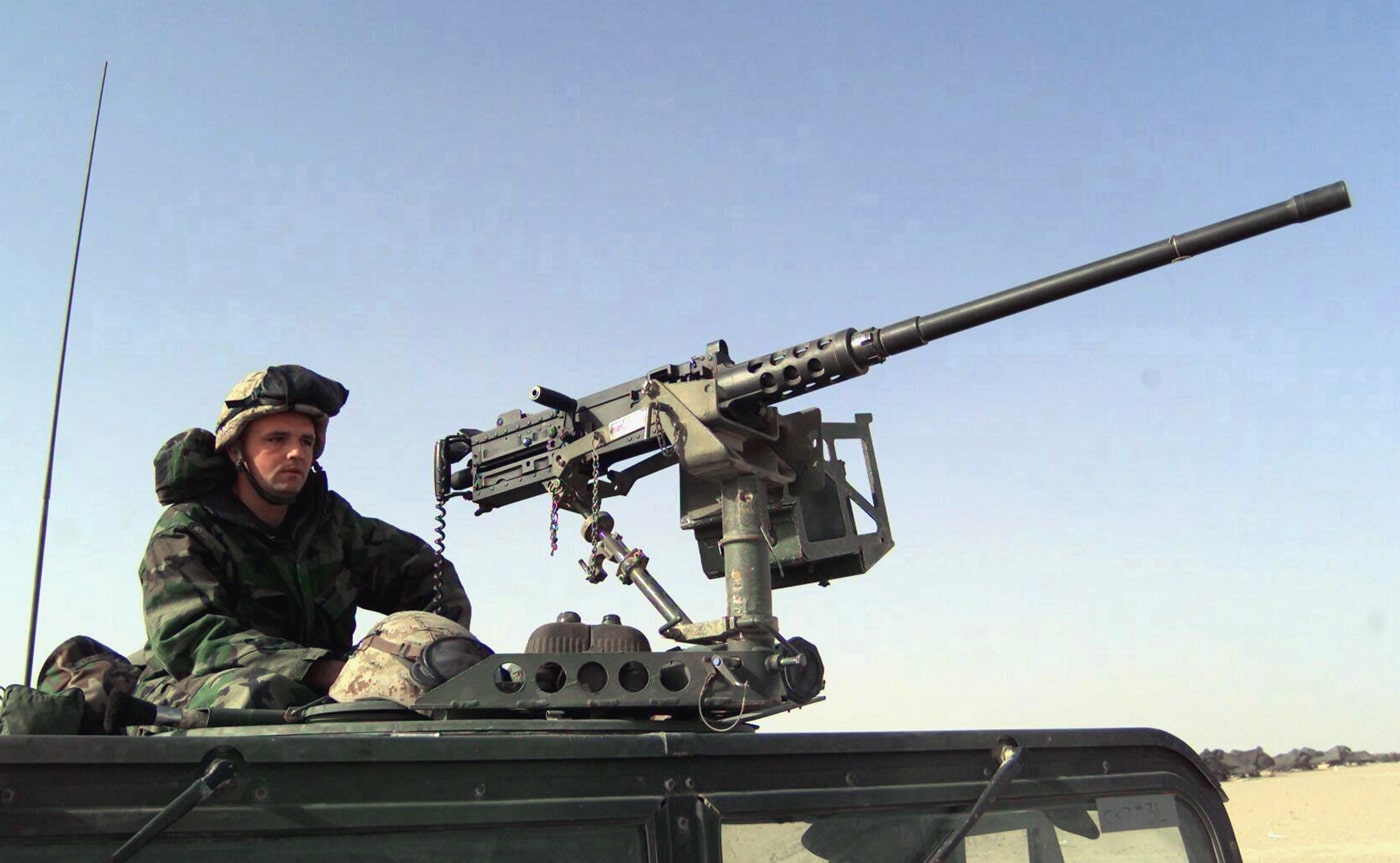
The standard M2HB cycles between 450 and 600 rpm. The AN/M2 is the aircraft version of the weapon with a lighter skeletonized bolt assembly. This variant runs around 750 to 850 rpm. The AN/M3 is a further evolution of the aircraft gun that features a rate of fire of 1,200 rpm.
The standard M2HB weighs 84 lbs. empty. The corresponding M3 tripod is another 44 lbs. The weapon fires via a characteristic spade grip with a butterfly trigger. The gun offers semi- or full-auto operation, though selecting that is not as straightforward as it might seem. Curiously, the original M2HB lacks a manual safety. An empty shell casing can be slipped underneath the butterfly trigger as an improvised field expedient.
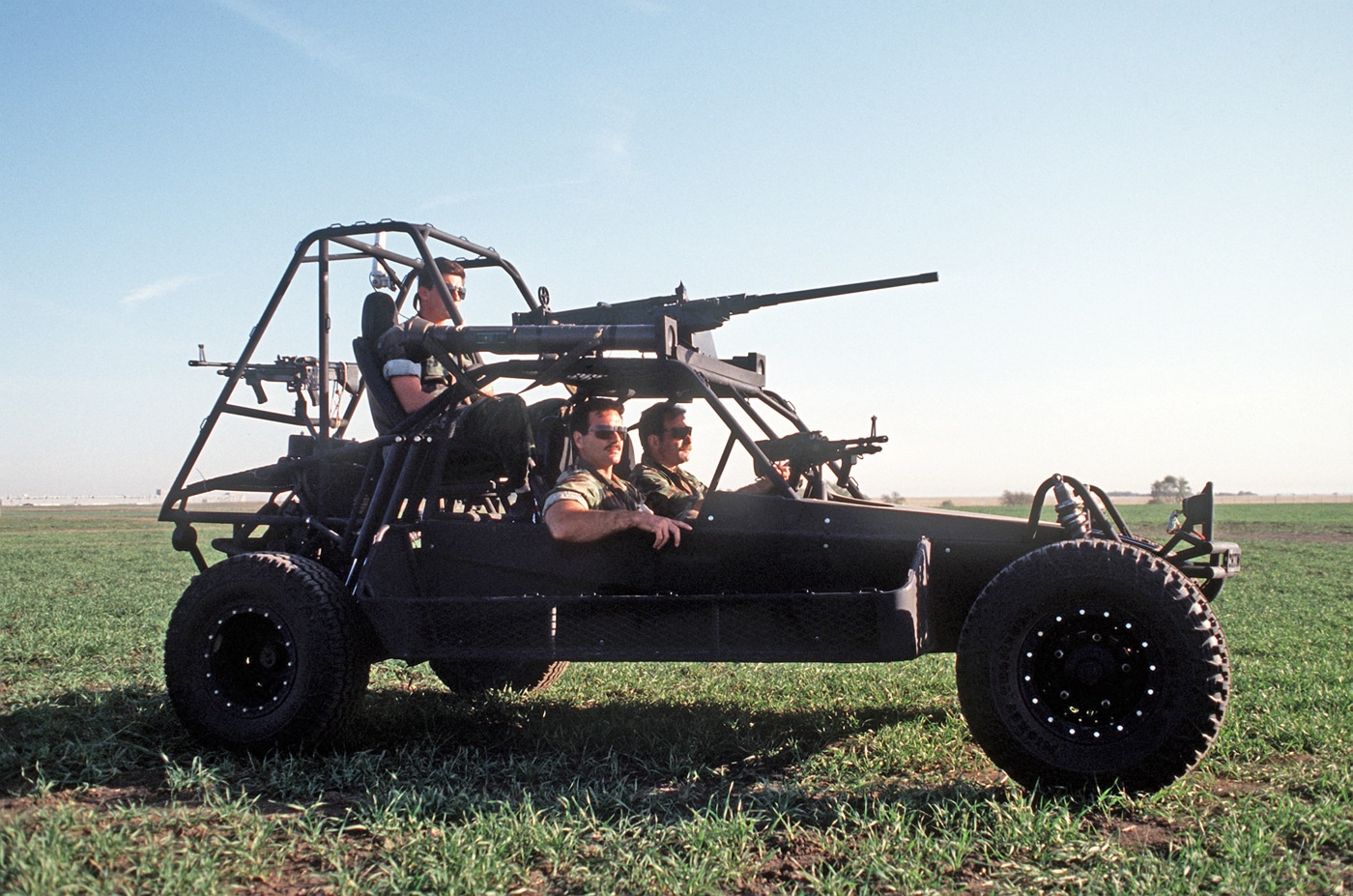
The M2HB has a published maximum effective range of 2,000 meters. Standard ammunition boxes carry 100 rounds. The M2 is arguably the most versatile machinegun ever created.
.50 BMG Ammunition
Standard M33 ball ammo pushes a massive 706.7-grain bullet. M17 tracers, M8 armor-piercing Incendiary, and M20 armor-piercing incendiary-tracer rounds all have their applications. The specialized M962 SLAP-T (Saboted Light Armor Penetrator-Tracer) can punch through 1.34 inches of face-hardened steel plate at half a kilometer. Type classified in 1993, the SLAP-T round pushes a .30-caliber tungsten penetrator that just will not stop.
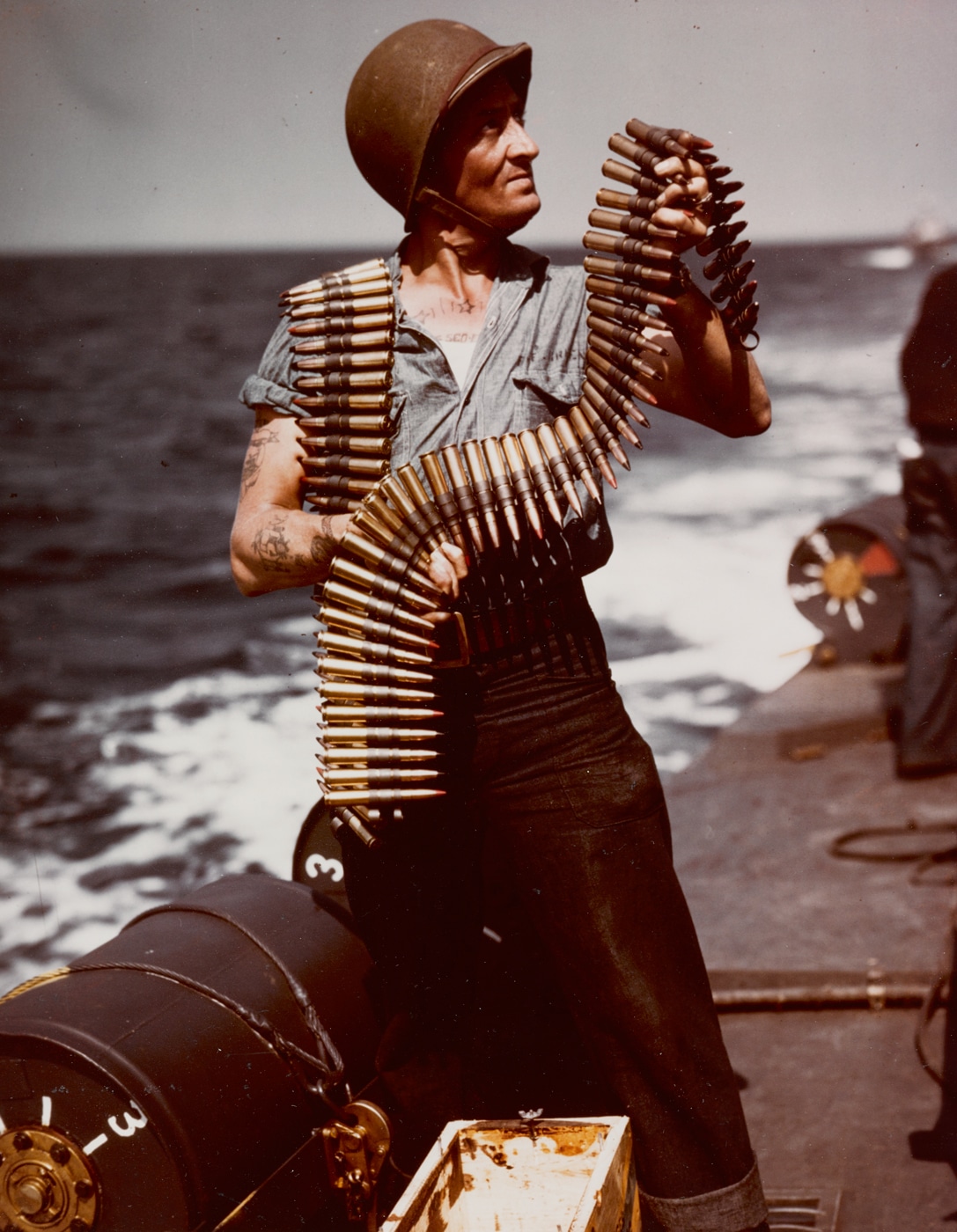
Winchester originally wanted the .50-caliber ammunition to be rimmed so it could be used in anti-tank rifles, but the Ordnance Department felt otherwise. Because the M2HB is recoil-operated, it requires a massive external contraption to reliably cycle blanks. Blank-adapted .50-cals are readily identified by the long rods affixed around the barrel’s exterior giving it an almost sci-fi look.
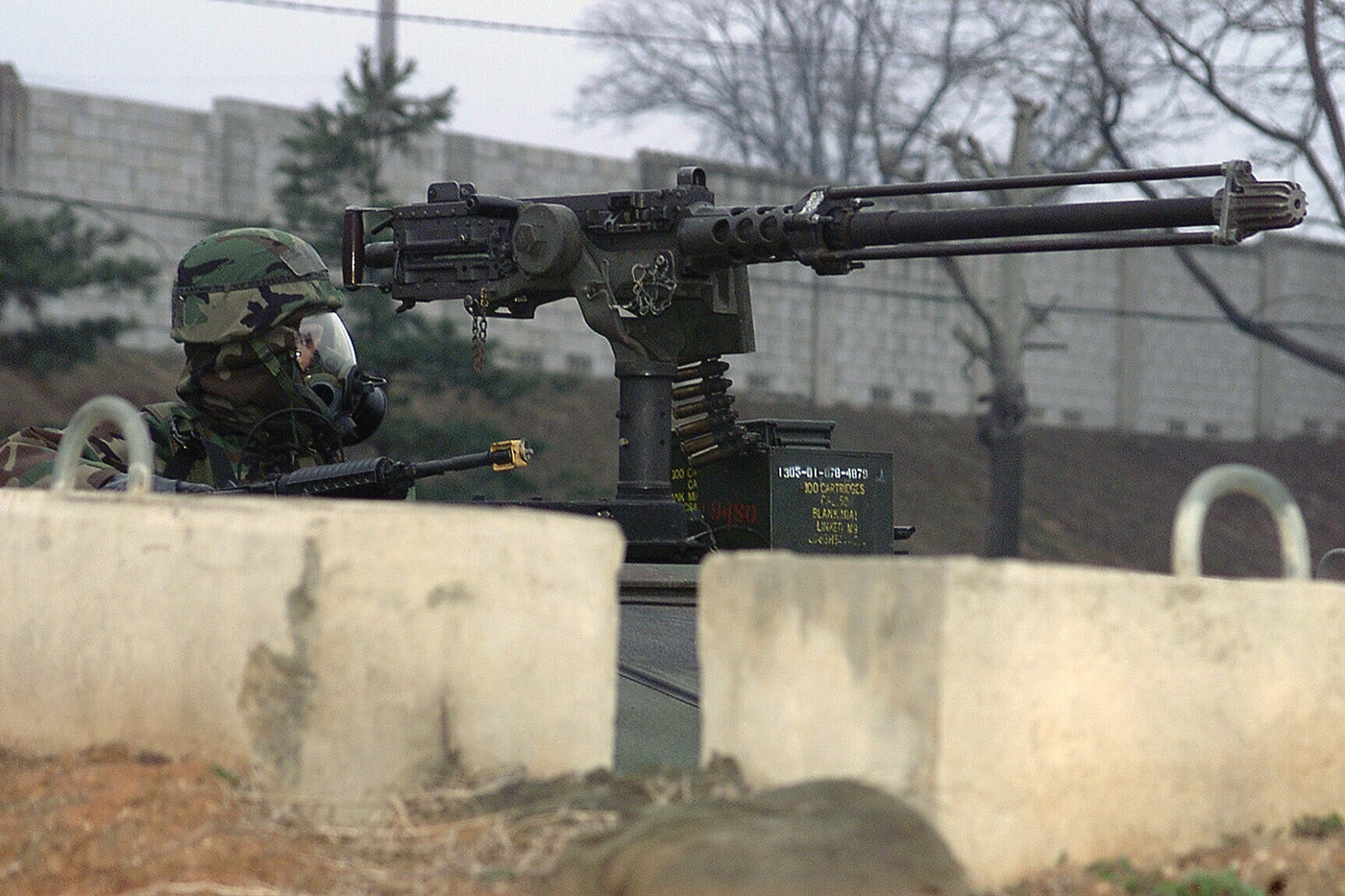
Applications
During World War II, American forces put the M2HB on most anything that moved. Though the weight and recoil were a bit much, they actually did ride on pedestal mounts atop standard jeeps. We put the Ma Deuce in ring mounts on supply trucks, in cupola mounts on tanks, and on the aforementioned infantry tripods.
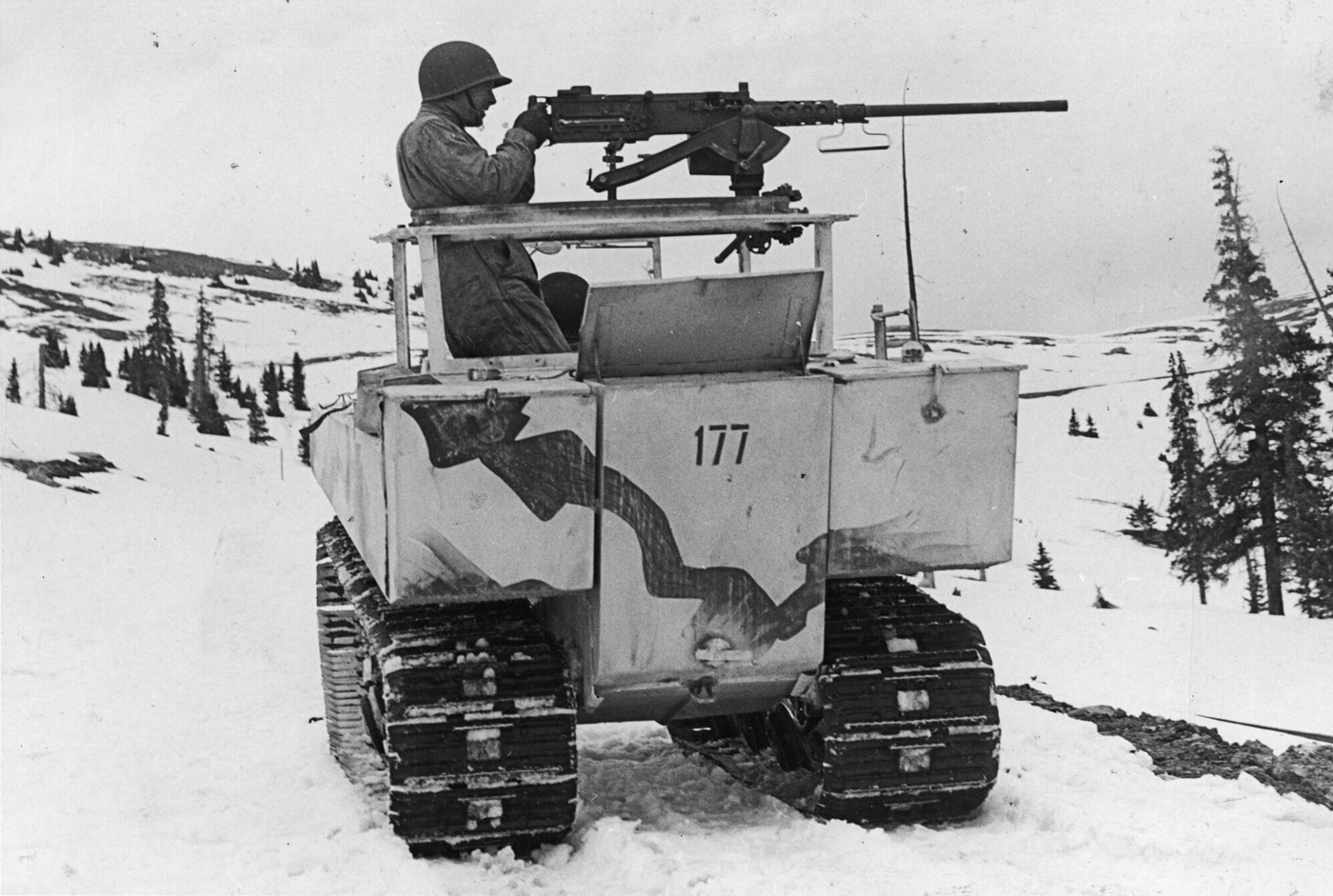
It is a manly task indeed to hump that gun along with its bulky ammunition and support gear any significant distance on foot. I never carried one farther than from the arms room to a nearby truck, and I lost my enthusiasm for that enterprise in short order. In practice, troops typically remove the barrel to transform the gun itself into a two-man load.
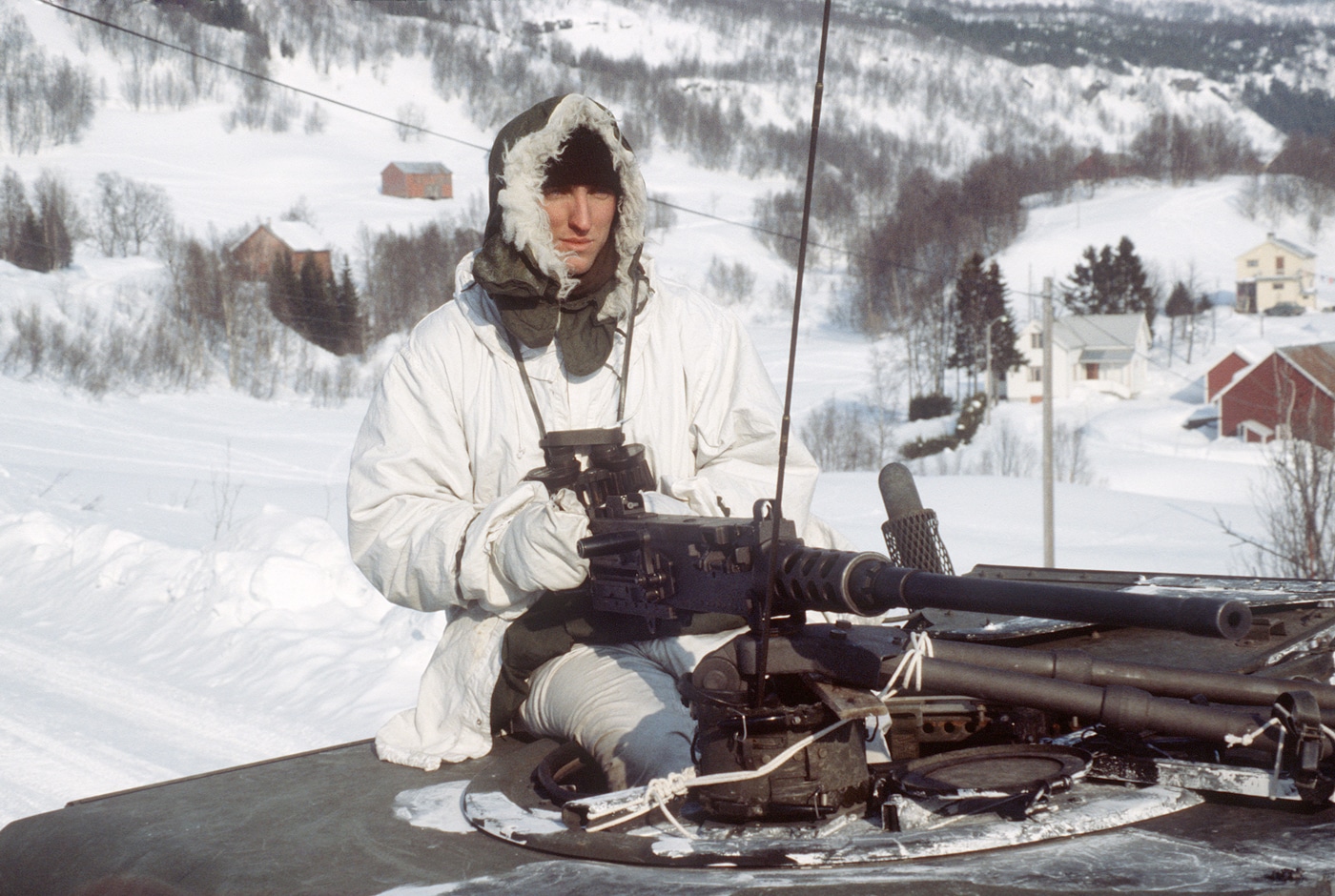
Tank mountings in particular were nominally intended for anti-aircraft use. WWII-vintage warships frequently bristled with the things for the same purpose. Where the M2 really found its legs, however, was in airplanes.
AN/M2 — Aerial Firepower
The standard loadout for most American fighter aircraft during the war was half a dozen AN/M2 guns mounted in the wings. This offered an aggregate rate of fire of 4,800 rounds per minute or 80 rounds per second. The P-47 Thunderbolt carried eight of the guns, while the P38 Lightning sported four along with a Hispano 20mm cannon. The F4F Wildcat used early in the war had four. However, the P-51 Mustang, F6F Hellcat, P-40 Warhawk, and F4U Corsair all carried six. Typical ammunition load was around 400 to 450 rounds per gun.
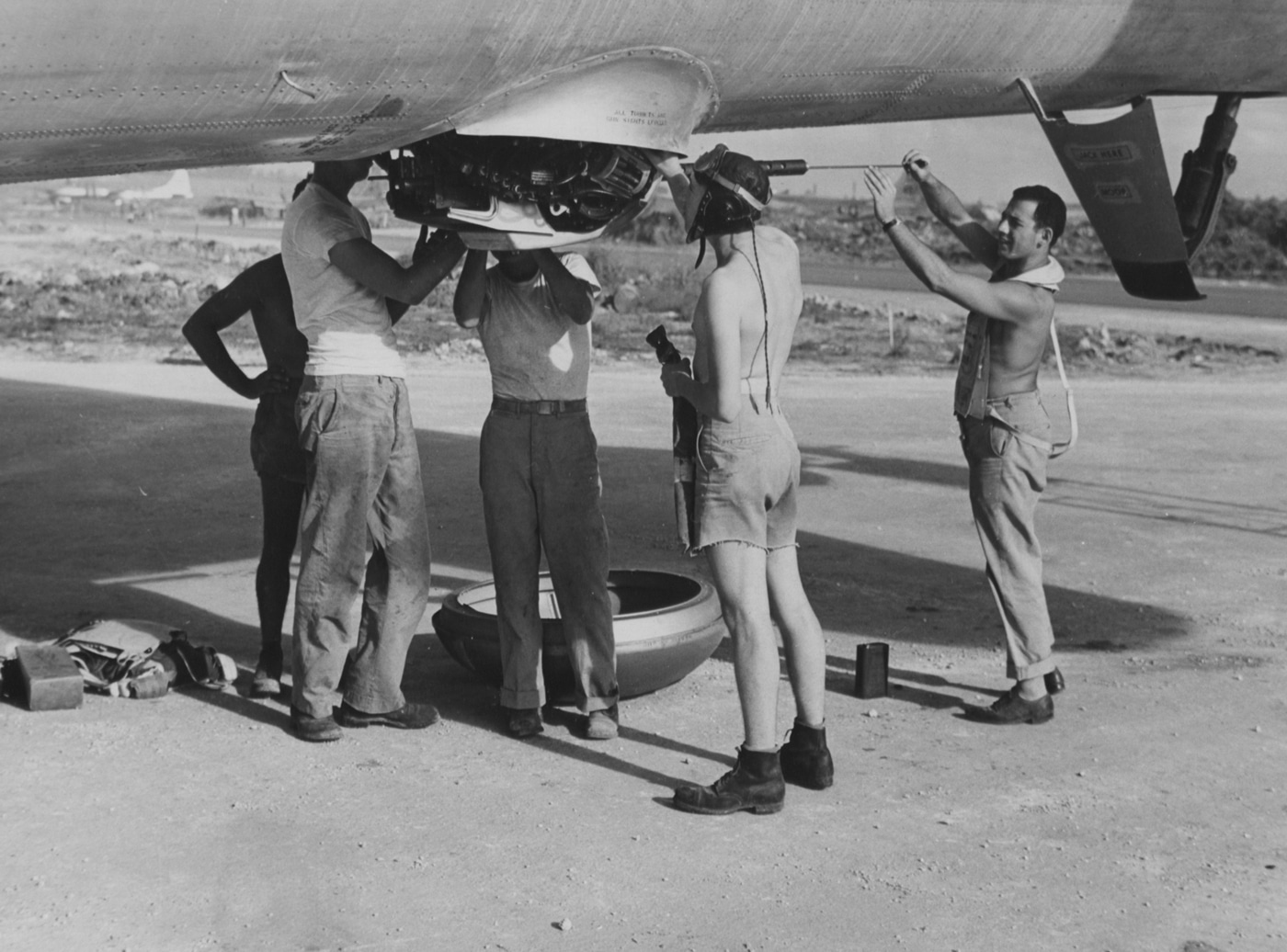
The massive strategic bombing campaign unleashed by the Allies on German industrial targets during WWII had a two-fold objective. The first was to castrate German industry and, in so doing, hamper the Axis war effort. The second, and equally important, was to kill German fighter pilots. The primary weapon used to accomplish that second goal was the AN/M2 .50-caliber machinegun.
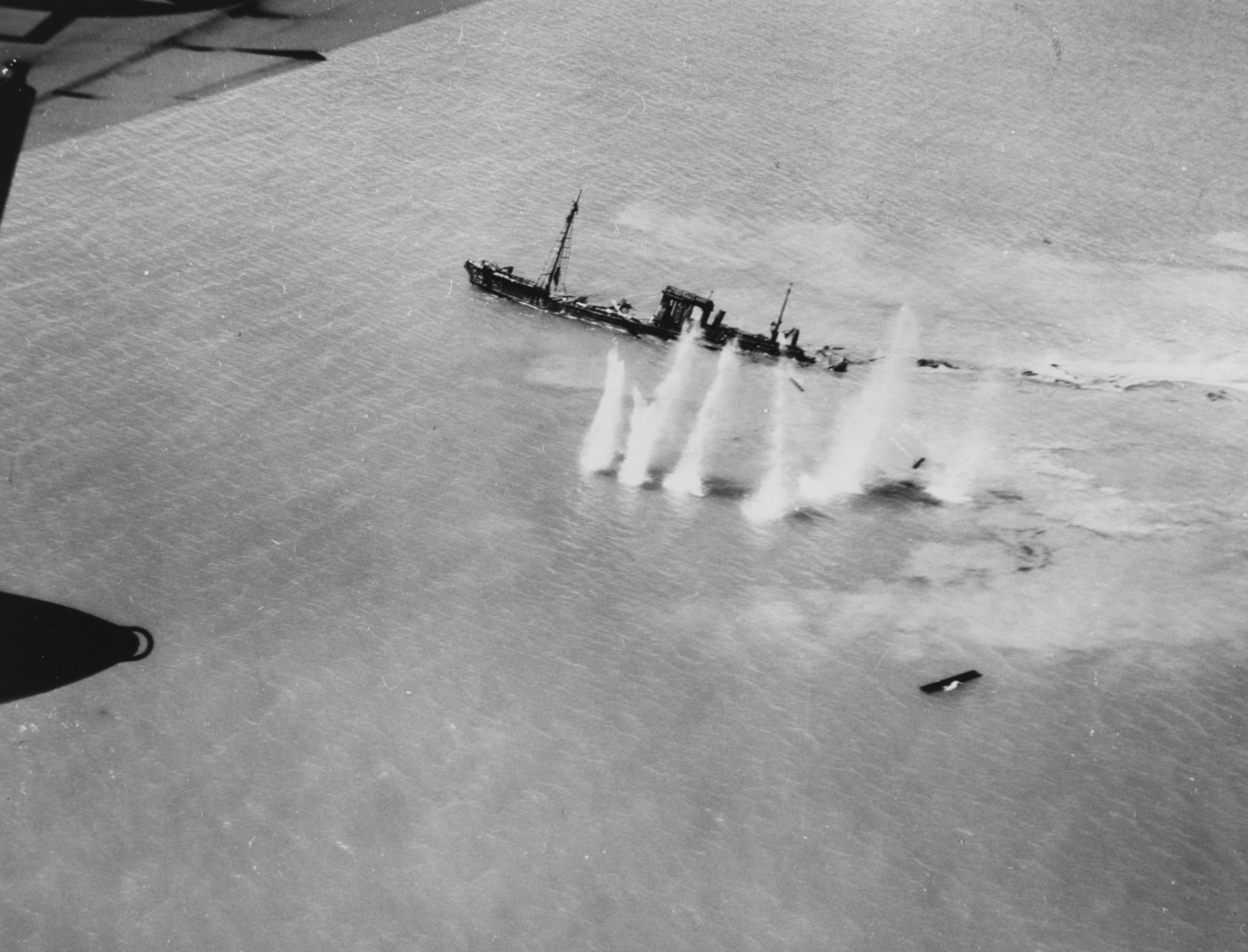
Late-model B-17G Flying Fortresses carried 13 of the big guns in a combination of powered turrets and free mounts. The B-24J Liberator sported ten. The B-29 Superfortress packed a dozen of the weapons in advanced remote-controlled gun mounts. H-model B-25 Mitchell gunships used to attack Japanese shipping carried 14 alongside a modified 75mm tank cannon. One unnamed German pilot likened attacking American bomber formations to copulating with a porcupine.
Going Forward with the M2A1
Original M2’s had to be manually set for headspace and timing to accommodate anomalies in ammunition production. In 2010 the Army introduced the M2A1. This improved M2HB features fixed headspace and timing along with a quick-change barrel system. Uncle Sam undertook this conversion on all 54,000 M2’s in the current U.S. Army inventory. The Marines did the same with their 3,600 weapons. The Israelis followed suit as well.
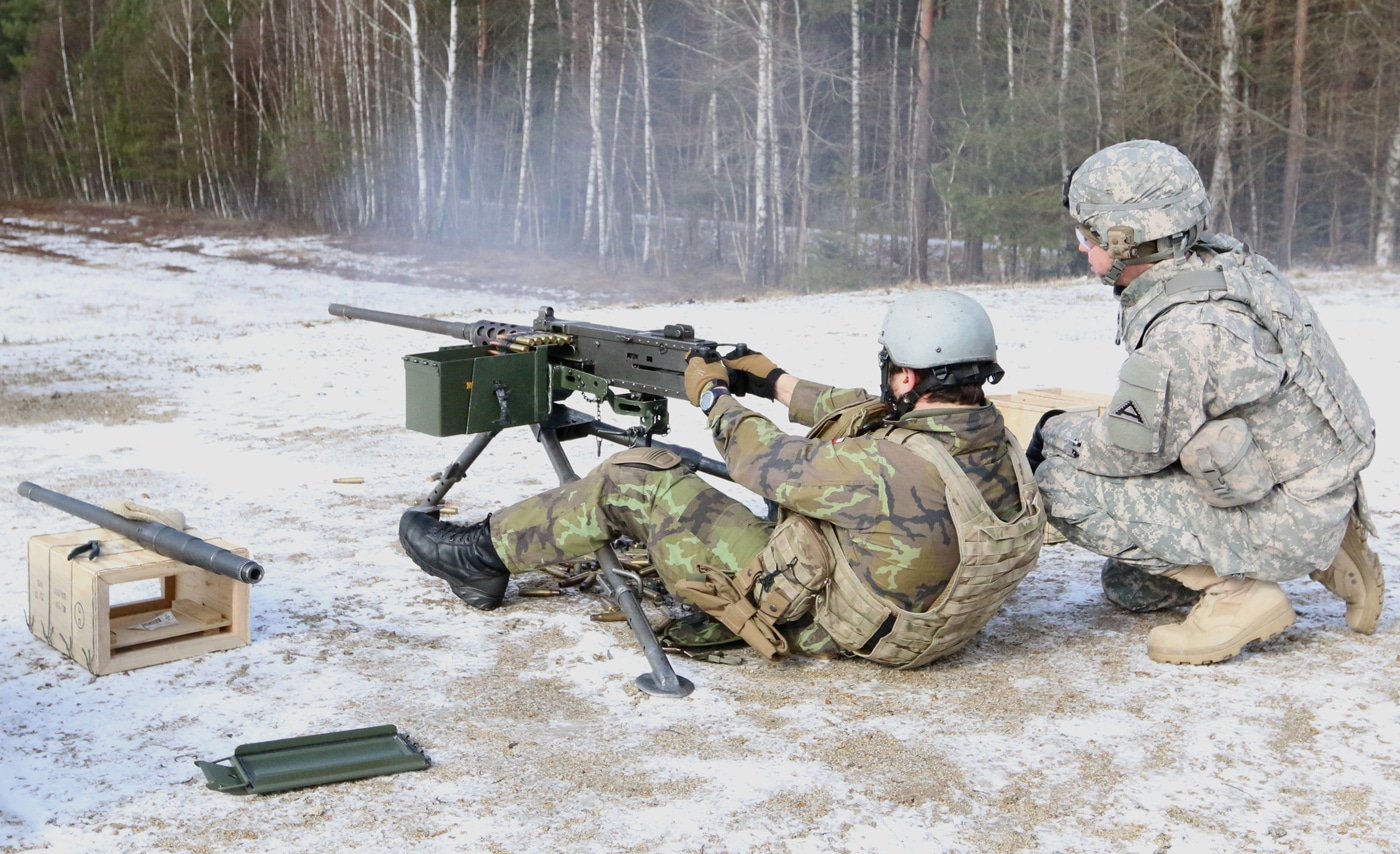
Despite being more than a century old, the Ma Deuce still rides proudly atop every American M1 Abrams tank in service. Supply trucks and self-propelled artillery pieces all feature the obligatory .50-caliber up top as well. Browning’s timeless design still kills pirates, suppresses enemy fire from the doors of Marine helicopters, and generally dispenses freedom 706.7 grains at a time. The M2HB is America’s machine gun.
Editor’s Note: Please be sure to check out The Armory Life Forum, where you can comment about our daily articles, as well as just talk guns and gear. Click the “Go To Forum Thread” link below to jump in!
Join the Discussion
Read the full article here




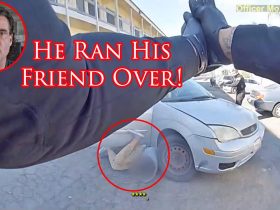


![Best .380 Pistol Options For Deep Carry [Tested] Best .380 Pistol Options For Deep Carry [Tested]](https://gundigest.com/wp-content/uploads/380-Pistol-Sig.jpg)

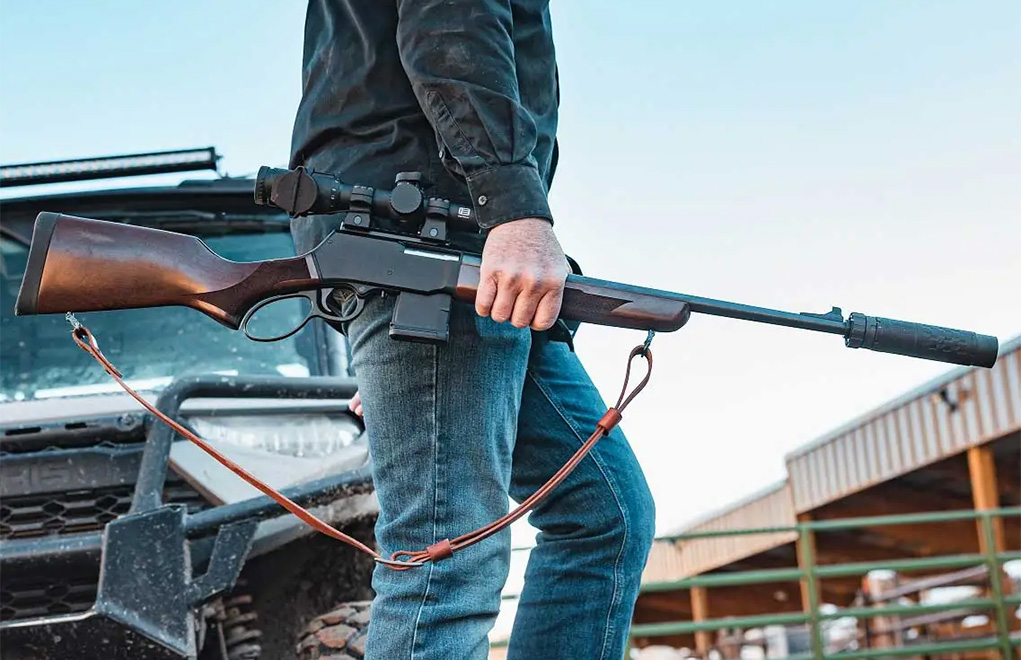


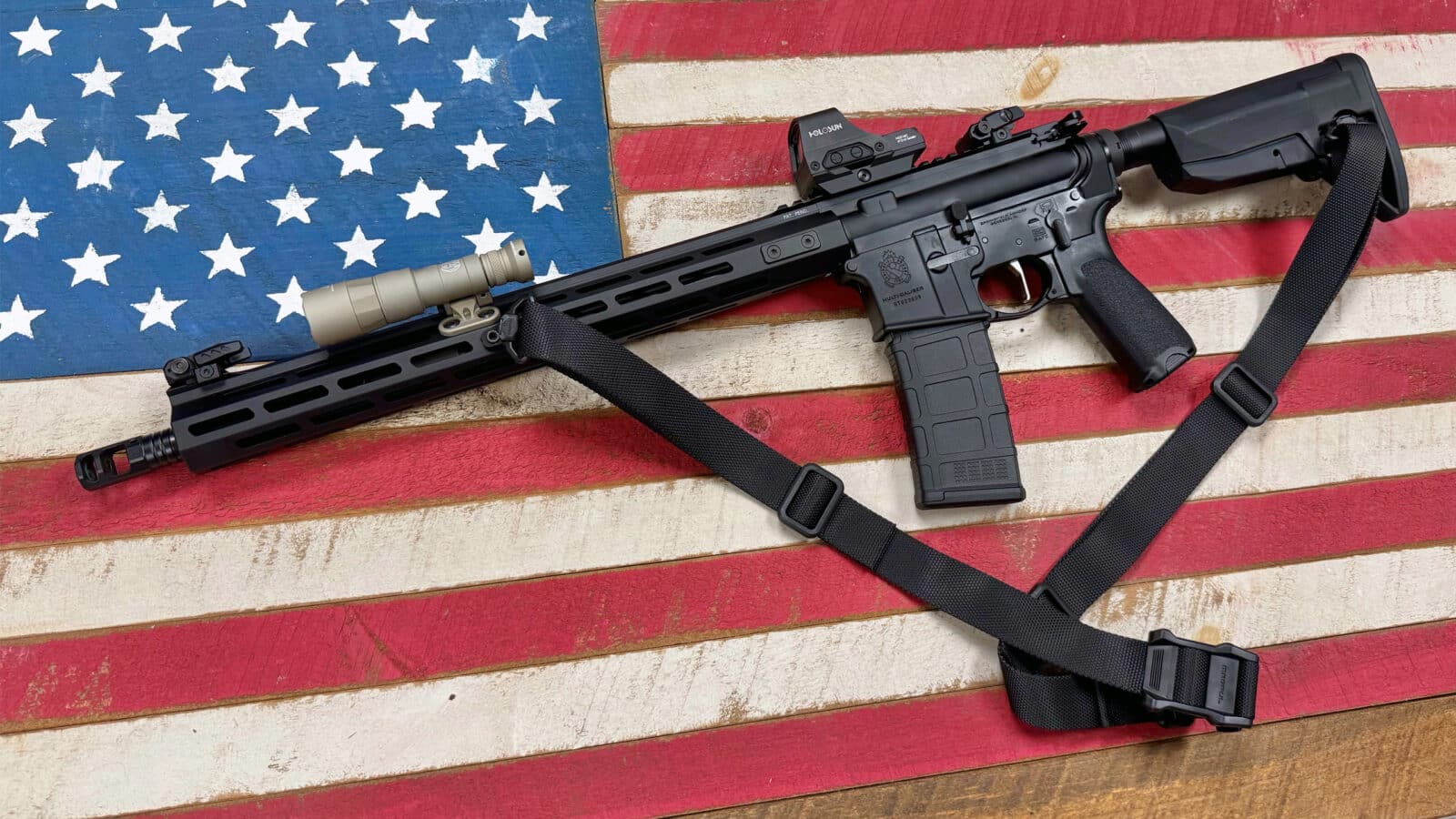

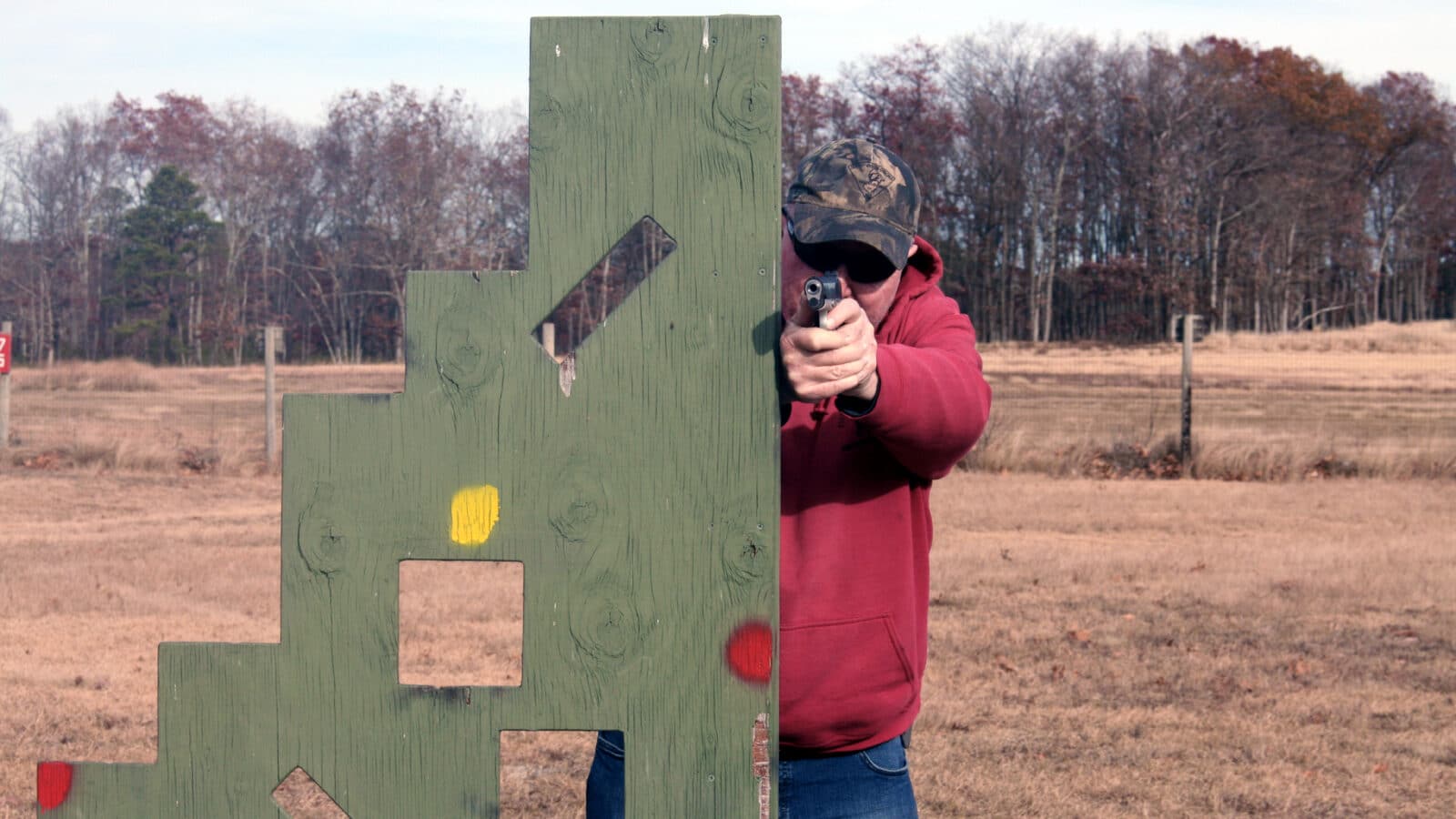



Leave a Reply